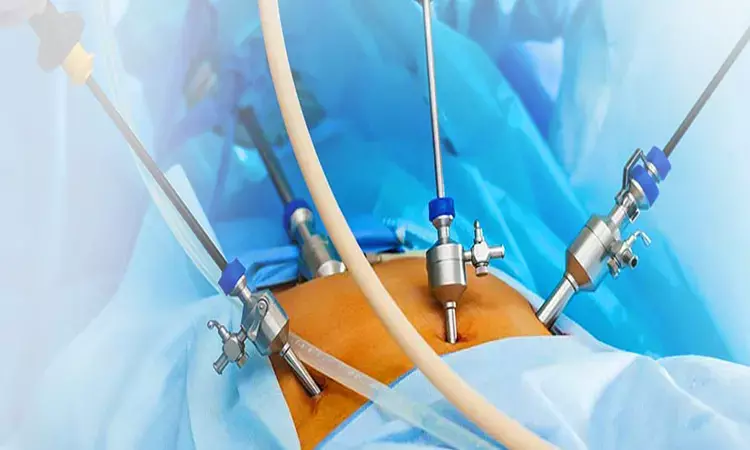- Home
- Medical news & Guidelines
- Anesthesiology
- Cardiology and CTVS
- Critical Care
- Dentistry
- Dermatology
- Diabetes and Endocrinology
- ENT
- Gastroenterology
- Medicine
- Nephrology
- Neurology
- Obstretics-Gynaecology
- Oncology
- Ophthalmology
- Orthopaedics
- Pediatrics-Neonatology
- Psychiatry
- Pulmonology
- Radiology
- Surgery
- Urology
- Laboratory Medicine
- Diet
- Nursing
- Paramedical
- Physiotherapy
- Health news
- Fact Check
- Bone Health Fact Check
- Brain Health Fact Check
- Cancer Related Fact Check
- Child Care Fact Check
- Dental and oral health fact check
- Diabetes and metabolic health fact check
- Diet and Nutrition Fact Check
- Eye and ENT Care Fact Check
- Fitness fact check
- Gut health fact check
- Heart health fact check
- Kidney health fact check
- Medical education fact check
- Men's health fact check
- Respiratory fact check
- Skin and hair care fact check
- Vaccine and Immunization fact check
- Women's health fact check
- AYUSH
- State News
- Andaman and Nicobar Islands
- Andhra Pradesh
- Arunachal Pradesh
- Assam
- Bihar
- Chandigarh
- Chattisgarh
- Dadra and Nagar Haveli
- Daman and Diu
- Delhi
- Goa
- Gujarat
- Haryana
- Himachal Pradesh
- Jammu & Kashmir
- Jharkhand
- Karnataka
- Kerala
- Ladakh
- Lakshadweep
- Madhya Pradesh
- Maharashtra
- Manipur
- Meghalaya
- Mizoram
- Nagaland
- Odisha
- Puducherry
- Punjab
- Rajasthan
- Sikkim
- Tamil Nadu
- Telangana
- Tripura
- Uttar Pradesh
- Uttrakhand
- West Bengal
- Medical Education
- Industry
Hand-Sewn Anastomosis in Pancreaticoduodenectomy Reduces Delayed Gastric Emptying: Study

In a recent study published in the Surgery journal highlights the superiority of hand-sewn anastomosis for pancreaticoduodenectomy and its impact on delayed gastric emptying. Pancreaticoduodenectomy is a complicated surgical procedure often performed to treat pancreatic cancer and other conditions that involves reconnecting the stomach to the small intestine. The two primary methods for this reconnection are hand-sewn anastomosis and stapled anastomosis, and so, Zhendong Fu and team focused on comparing the efficacy of these methods.
The study was conducted from December 2016 to November 2021 and included 1,077 patients who underwent pancreaticoduodenectomy, where 734 patients received hand-sewn anastomosis and 343 underwent stapled anastomosis. The study identified factors influencing delayed gastric emptying through rigorous analysis and propensity score matching and assessed the efficacy of different anastomotic methods.
The results of the study revealed a clear advantage for hand-sewn anastomosis over the stapled method. The patients in the hand-sewn group experienced a significantly lower incidence of delayed gastric emptying (8.8% vs. 17.2%) and upper gastrointestinal tract bleeding. Also, the participants benefited from shorter postoperative hospital stays and reduced hospitalization expenses, despite the procedure taking longer when compared to the stapled anastomosis.
The logistic regression analysis highlighted stapled anastomosis, intra-abdominal infection and clinically relevant postoperative pancreatic fistula as independent prognostic factors for delayed gastric emptying.
The study emphasized the importance of these findings which underscores the superiority of hand-sewn anastomosis in reducing postoperative complications, particularly delayed gastric emptying. Thereby, surgeons should consider this method to enhance patient outcomes and minimize the risk of complications. These findings contribute significantly to the ongoing debate surrounding the anastomotic techniques in pancreaticoduodenectomy and further studies in larger cohorts will improve the existing understanding.
Reference:
Fu, Z., Gao, S., Wu, X., Qin, J., Dang, Z., Wang, H., Han, J., Ren, Y., Zhu, L., Ye, X., Shi, X., Yin, X., Shi, M., Wang, J., Liu, X., Guo, S., Zheng, K., & Jin, G. (2024). Hand-sewn gastrojejunal anastomosis reduces delayed gastric emptying after pancreaticoduodenectomy: A single-center retrospective clinical study of 1,077 consecutive patients. In Surgery. Elsevier BV. https://doi.org/10.1016/j.surg.2023.12.001
Neuroscience Masters graduate
Jacinthlyn Sylvia, a Neuroscience Master's graduate from Chennai has worked extensively in deciphering the neurobiology of cognition and motor control in aging. She also has spread-out exposure to Neurosurgery from her Bachelor’s. She is currently involved in active Neuro-Oncology research. She is an upcoming neuroscientist with a fiery passion for writing. Her news cover at Medical Dialogues feature recent discoveries and updates from the healthcare and biomedical research fields. She can be reached at editorial@medicaldialogues.in
Dr Kamal Kant Kohli-MBBS, DTCD- a chest specialist with more than 30 years of practice and a flair for writing clinical articles, Dr Kamal Kant Kohli joined Medical Dialogues as a Chief Editor of Medical News. Besides writing articles, as an editor, he proofreads and verifies all the medical content published on Medical Dialogues including those coming from journals, studies,medical conferences,guidelines etc. Email: drkohli@medicaldialogues.in. Contact no. 011-43720751


